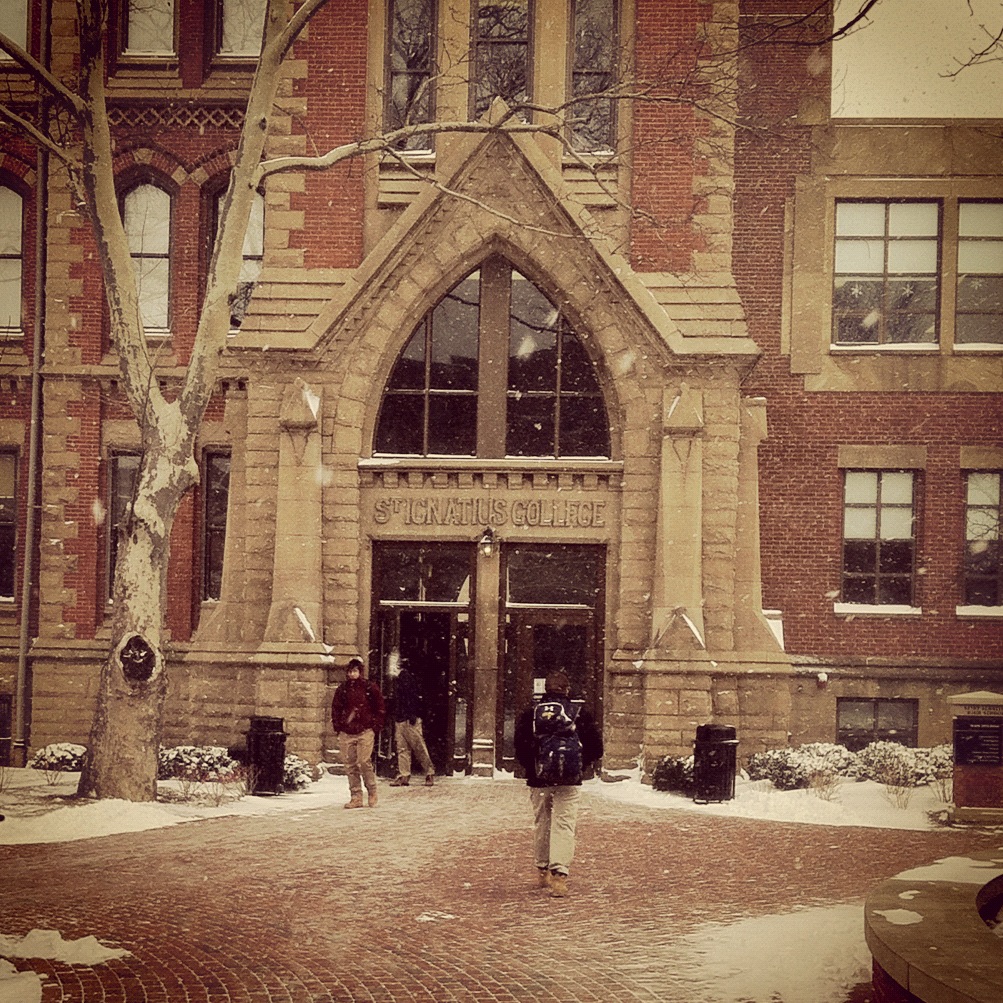by Alastair Pearson ’14
At 7:00 p.m. on Sunday, January 5 and 11:30 a.m. Monday, Saint Ignatius’s SchoolReach system sent out a blast of text messages, emails, and phone calls delivering the news of the school’s closure, touching off twin flurries of celebration over student social media.
The sober announcements of the school’s closure for the first two days back from break were the result of internal deliberations led by Principal Bradesca that, surprisingly, focused primarily on schools other than Ignatius. Bradesca emphasized that Ignatius makes its own decisions about whether to close, but the administration takes other districts – especially the Cleveland public system – into account as indicators.
“It is a rarity that the Cleveland schools close,” Bradesca said. “When they do, it is a foregone conclusion that we would be closed as well.”
[pullquote]
“The method is less scientific and more intuitive,” Bradesca said.
[/pullquote]
Because of much of the student body’s dependence on school buses from public school districts for transportation, he said, Ignatius must keep a watchful eye on closures throughout the region.
“Bus transportation provided by various area school districts for our students becomes unavailable when said districts close for inclement weather,” Bradesca said. “Virtually every school district in Northeast Ohio closed Sunday evening. It was clear that Saint Ignatius would follow suit.”
Bradesca noted that the closure today was unusual in that road conditions, which play a key role in weighing whether to close because of the “sizable” number of Ignatius student drivers, were not harshly impacted by the storm.
“No snowfall to speak of, and the temperature, while quite cold, was not unbearable,” he said. “The decision to close [Monday] was based upon the aforementioned scenario involving several area schools choosing to close.”
He also said that there is no hard-and-fast meteorological rule for determining whether to close or delay school.
“It is difficult to pinpoint a snowfall range or a wind velocity that could easily serve as a cutoff,” Bradesca said. “The method is less scientific and more intuitive.”
Bradesca explained that Tuesday’s closure was based in part on the same circumstances as Monday – the simultaneous closure of most area schools and the lack of student transport – and weather that has changed for the worse.
“Tomorrow’s temperature will in fact pose serious danger to anyone who finds themselves outside for an extended period of time,” he said.
However, if the closures may have had a positive impact on the principal’s reputation among the student body, Bradesca is not taking a populist approach to moving back the upcoming final exams.
“As of this writing,” he said, “finals will proceed as planned.”






